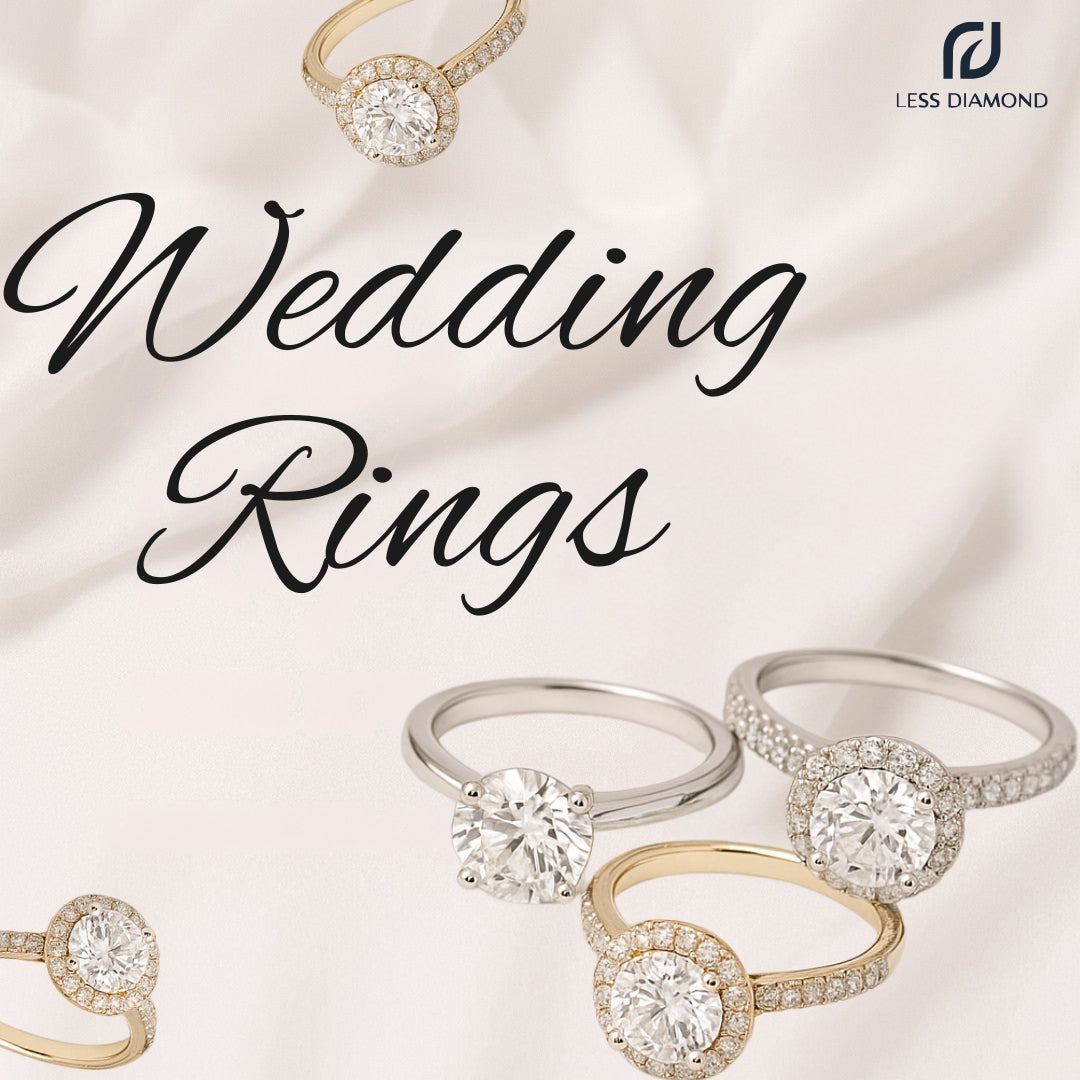Moissanite Diamond, Natural Diamond, and Lab Grown Diamond: What's the difference?
Technology has paved the way for massive advancements in jewelry making over the decades. Now, lab-created gemstones provide multiple ways to create the perfect ring without breaking the bank.
Every good thing has its downside, though. When it comes to fine jewelry shopping, the decision fatigue is real. With more options than ever, how do you know which diamond is the best for you?
When shopping for natural diamonds, lab-created diamonds, and diamond substitutes, here are some things you should consider:
- How the diamond appears to the naked eye.
- Practical considerations for everyday wear (durability, hardness, etc.).
- Pricing differences and future upgrades.
- Long-term investment value.
- Your personal feelings about mining and eco-friendly jewelry.
- The preferences of the ring recipient (especially for an engagement ring).
- The benefits of natural crystal vibrations from the earth.
Should You Buy a Natural Diamond or a Lab Created Diamond?
Just a few decades ago, there was only one option available when purchasing a diamond ring: the earth-made diamond. Incredibly valuable and brilliant, this diamond made its mark as the single most popular engagement ring stone of all time.
Today, a diamond is still a statement piece that signifies great value—plus a special love story. We recommend them for customers who love to own an investment piece—or something created by the earth over billions of years.
But the earth-made diamond is no longer the only way to achieve your “diamond is forever” moment. Lab-created diamonds are just as stunning as the real thing—and diamond substitutes are beautiful pieces worth considering, too.
Make a list of priorities for your diamond ring—and see which type of diamond matches the best.
The Iconic Natural Diamond
A crystal that takes billions of years to form can only be a masterpiece. There is truly nothing on earth like the natural diamond. Loved for ages by royals and diplomats, this stone is highly coveted and extremely valuable.
The overall value of a natural diamond depends on four key elements: color, cut, clarity, and carat size. The investment value and initial cost of the natural diamond depend on the purity of the stone.
Is This Natural Diamond for You?
We recommend the natural diamond to shoppers who:
Care deeply about natural and earth-made elements.
Want to purchase an heirloom or investment piece that will gain value over time.
Wish to really impress their future fiance.
Want their ring to reflect their larger budget.
Types of Lab-Created Diamonds and Diamond Substitutes
Lab-created diamonds are crystals that are synthetically created in a laboratory. Amazingly, they only take a few months to form unlike natural diamonds. For this reason, lab diamonds are significantly more cost-effective and are known for being eco-friendly.
Diamond substitutes fall into the same category as lab-created diamonds, since they are also created with synthetics and science. Common diamond substitutes, like moissanite and cubic zirconia, aren’t considered real diamonds due to their different chemical makeup. But to the naked eye, it’s difficult to tell.
Moissanite
The naturally-occurring mineral moissanite is incredibly rare and wildly valuable. The locations where moissanite can be found on earth are so few, many believe it originally came through a meteorite that landed on Earth. For this reason, any moissanite you see in a jewelry showroom today is artificially created.
Although it isn’t scientifically a diamond, moissanite looks almost identical to the naked eye. Only a trained professional can tell the difference between it and a diamond.
Since it’s so easy to create in a lab, moissanite stones cost a fraction of the price of a nature-made diamond. They’re also softer and may require maintenance throughout the years.
Moissanite is known for its rainbow rays that are slightly more brilliant than the diamond.
Is This Diamond Alternative for You?
We recommend moissanite to shoppers who:
- Are on a budget but still want a beautiful ring.
- Aren’t prone to wearing out their stone.
- Don’t mind owning a diamond substitute.
- Aren’t using their diamond purchase as an investment.
- Wish to begin with a diamond ring and upgrade later.
Lab-Created Diamonds
The sibling to the earth-made diamond is the lab-created diamond. This stone has the exact same chemical makeup as a mined diamond. It’s simply formed in a laboratory over a few months, instead of billions of years. This makes the stone affordable and eco-friendly but no less brilliant.
Since they have the same chemical makeup, it’s impossible to tell the difference between a lab-created diamond and a nature-made one without special equipment.
Even though this diamond is created in a lab, it’s still considered 100% real. No need to give up your diamond fantasies!
Is This Diamond Alternative for You?
We recommend the lab-created diamond to shoppers who:
Care about keeping the integrity of the diamond but don’t need it to be earth-made.
Are shopping on a budget.
Prioritize a large carat diamond.
Aren’t using their diamond as an investment or heirloom piece.
Prefer to have something eco-friendly.
Which Diamond Will You Choose?
Before you make the official purchase, take a moment to think about what’s most important to you in a ring. For some, it’s the huge natural diamond jewelry that’s the show-stopper. For others, the ring’s design and meaning take center stage.















